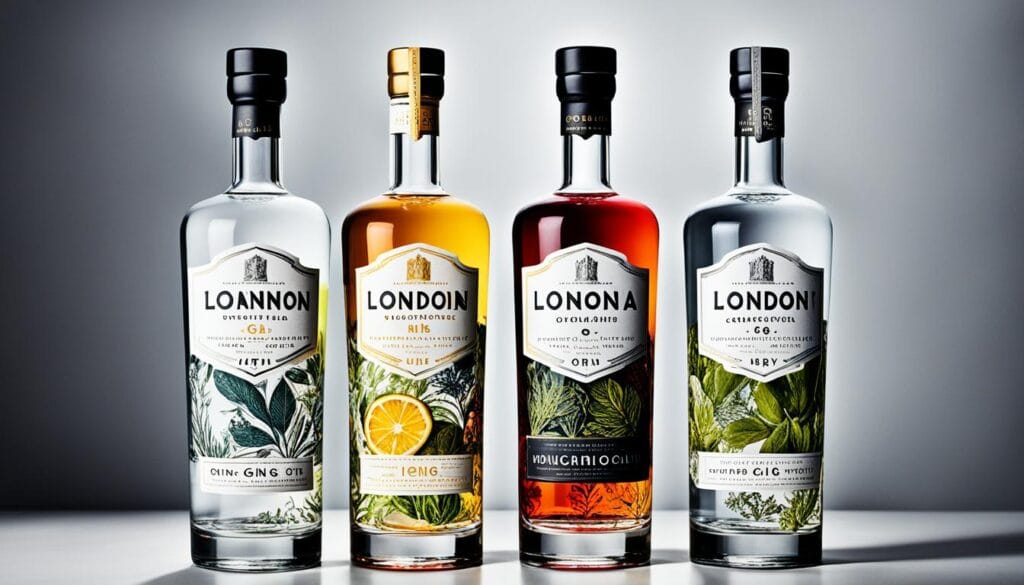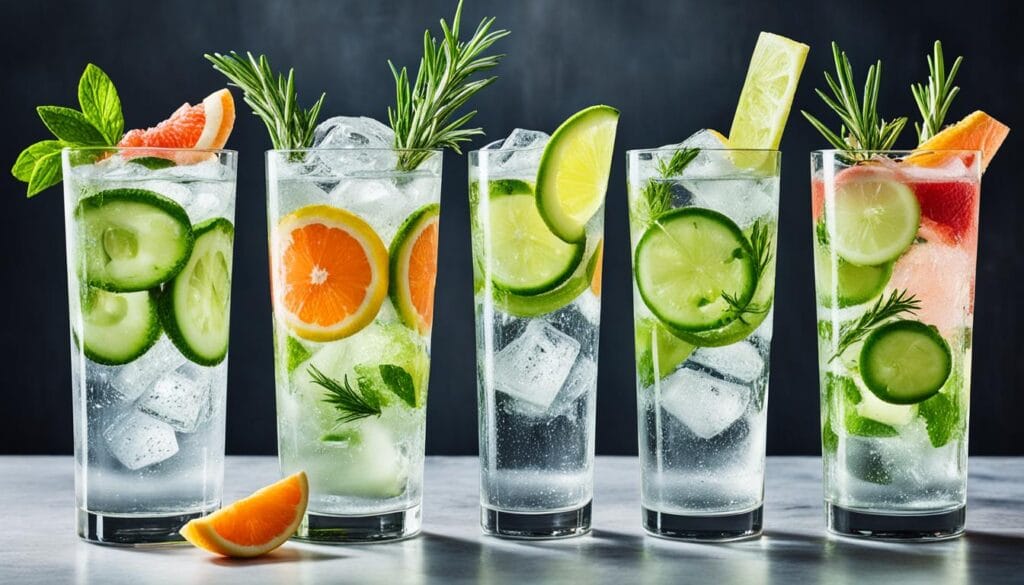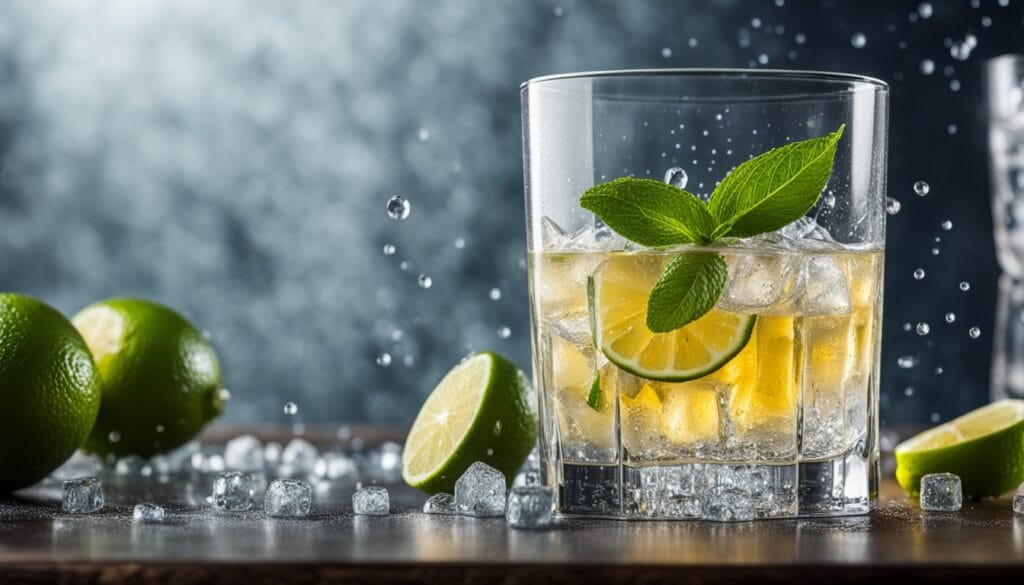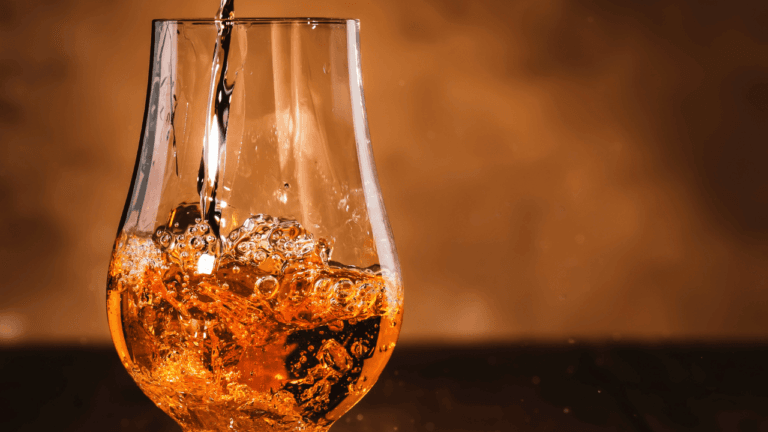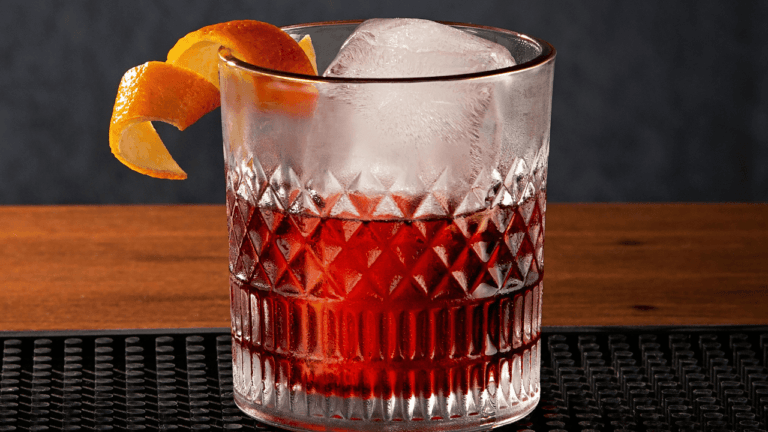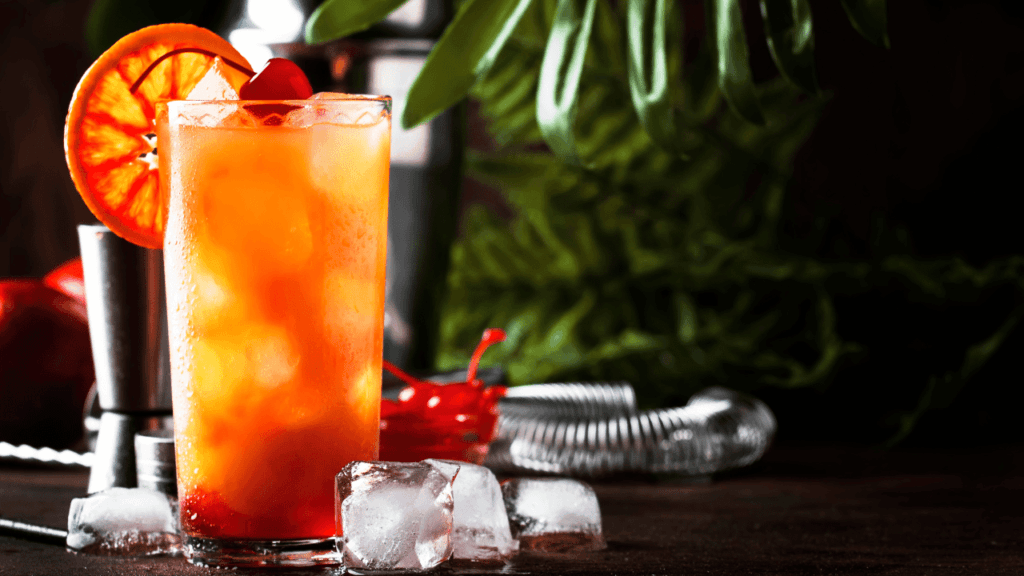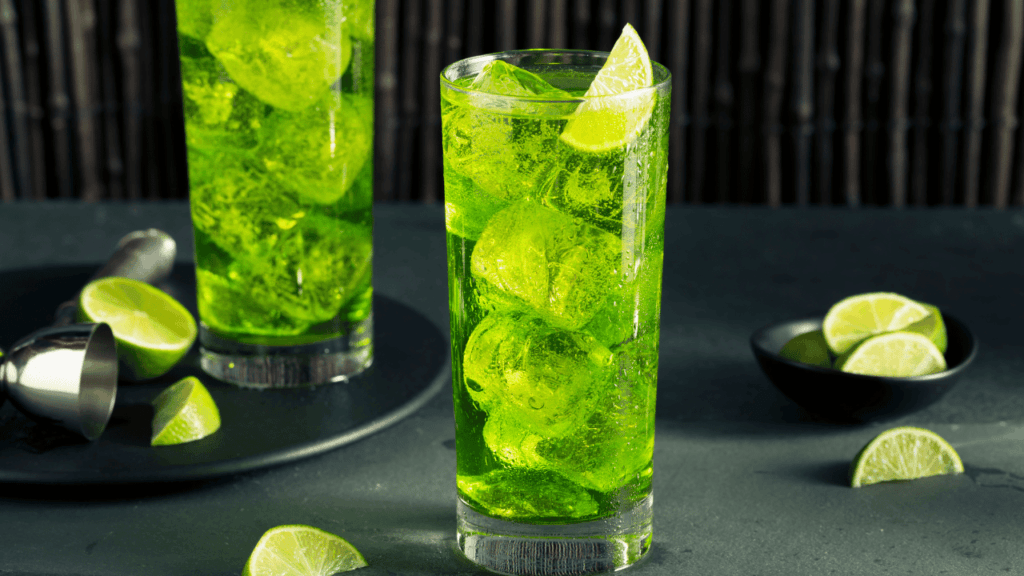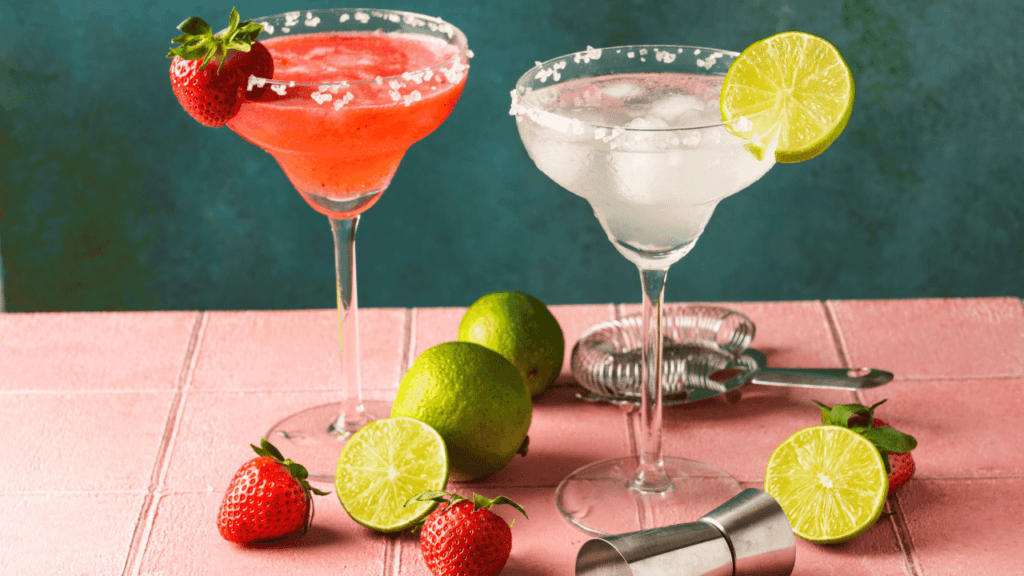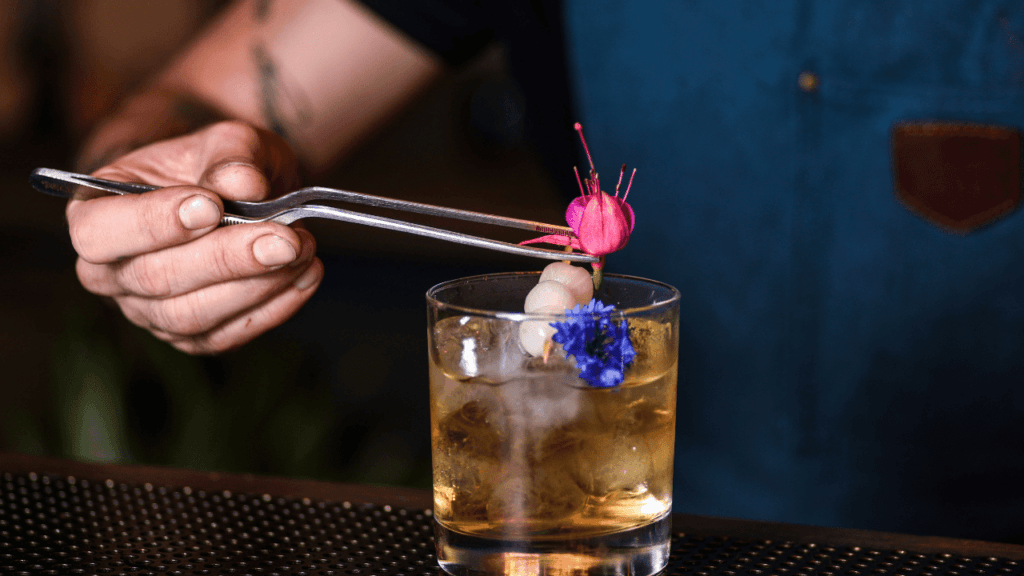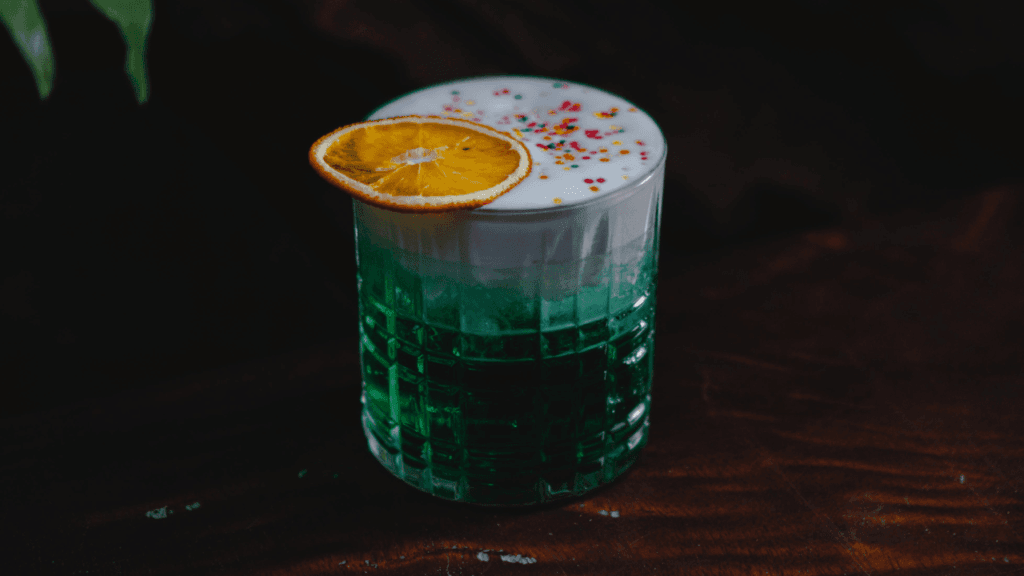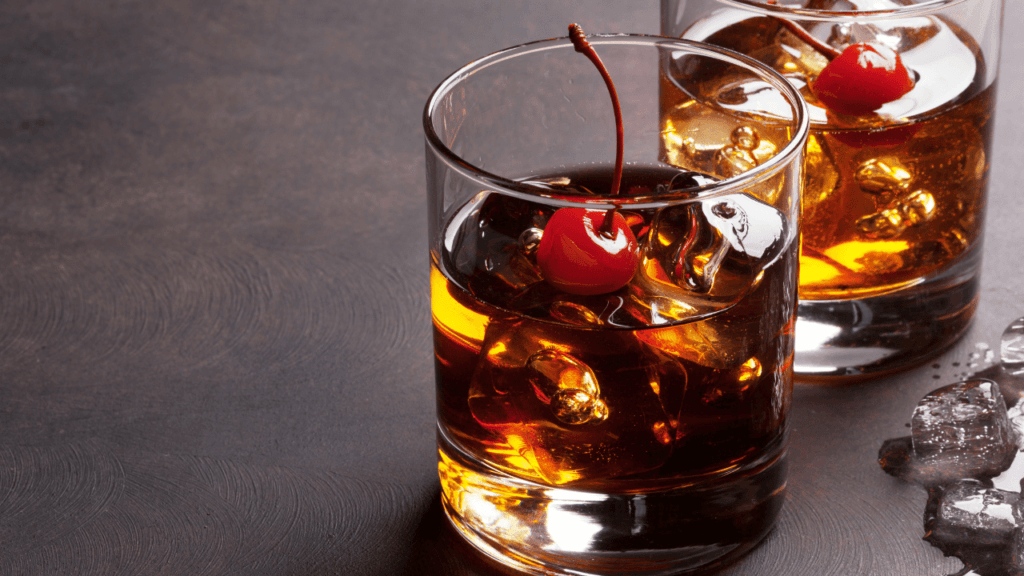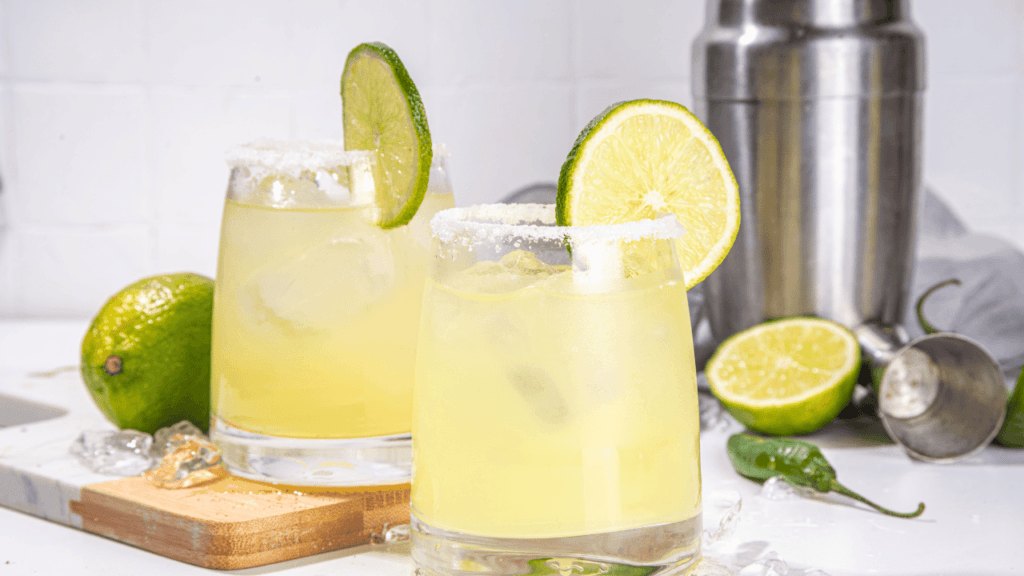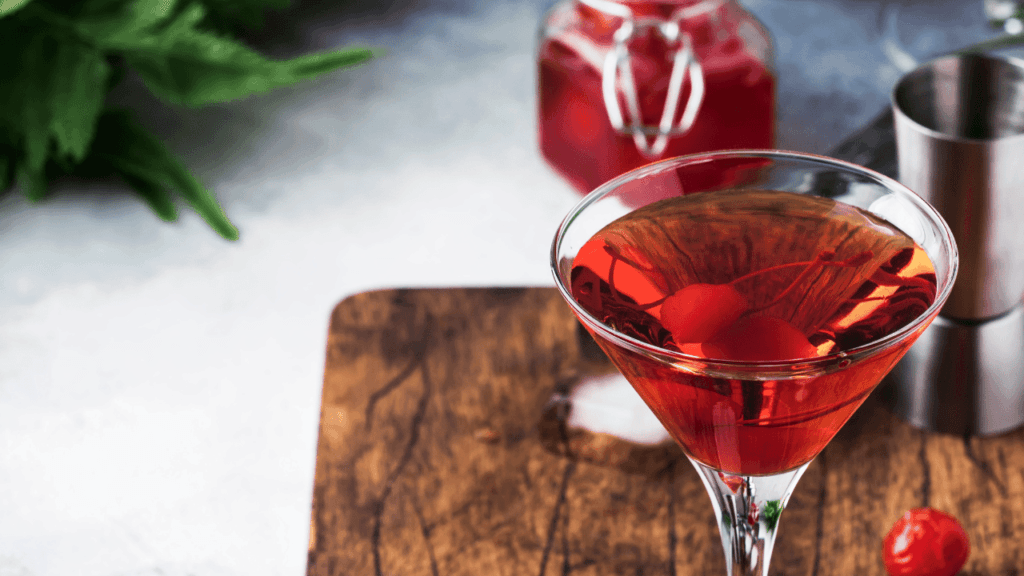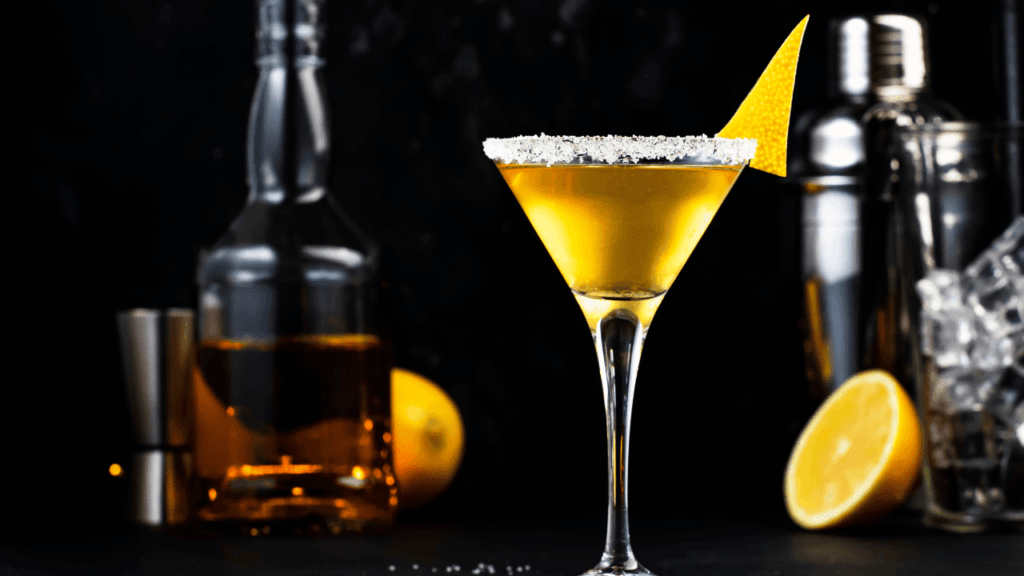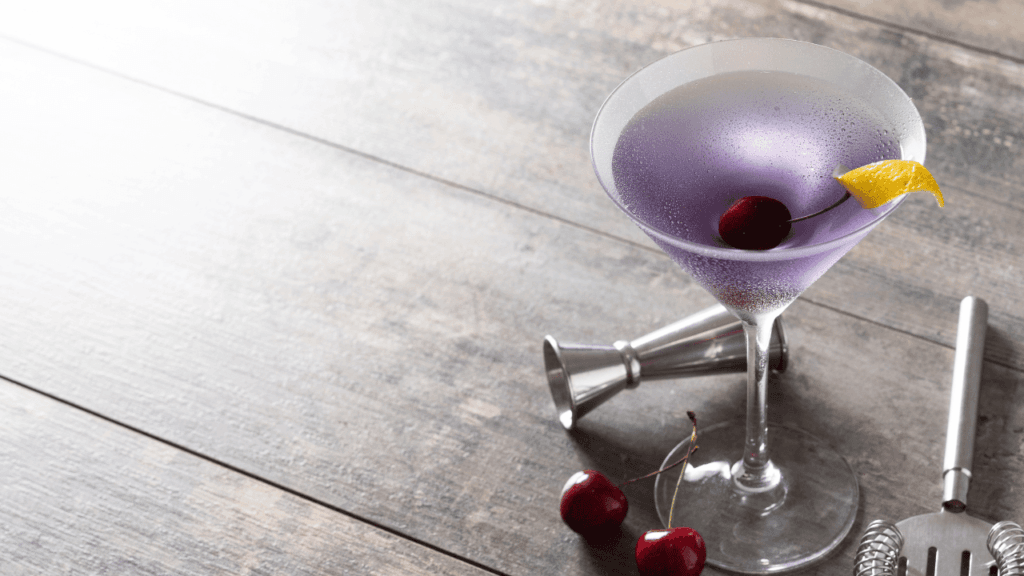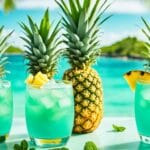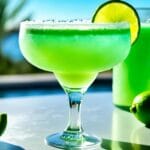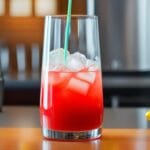The key to creating the perfect gin and tonic cocktail is finding the right balance. You need to mix the tonic’s bitter taste with the gin’s fragrant notes. This guide will show you how to make a gin and tonic that’s both thirst-quenching and sharp. We’ve teamed up with experts like Adam and Joanne Gallagher to stress the value of good gin. They suggest using gins such as Beefeater, Plymouth, or Bombay Sapphire for their great tastes.
Start with fresh tonic water for the best results. Go for single-serve bottles to keep the fizz and taste lively. Don’t forget to add fresh lime juice. It gives your drink a zesty kick, making it better than the rest. For a perfect mix, combine 2 ounces of gin with 5-6 ounces of tonic water. This ratio will make a perfectly balanced gin and tonic.
Key Takeaways
- The ideal gin to tonic ratio is 1:3 for a balanced drink.
- Mid-to-high-shelf gin brands like Beefeater, Plymouth, or Bombay Sapphire offer superior flavor profiles.
- Use fresh tonic water from single-serving bottles to maintain effervescence.
- Fresh lime juice adds essential brightness to the cocktail.
- A ratio of 3:4 gin to tonic ensures a refreshing and crisp drink.
Introduction to the Classic Gin and Tonic
The classic gin and tonic is more than just a summer drink. It has a long history and wide appeal. Its simplicity is a big reason why it has stayed popular in the world of cocktails.
The History Behind the Gin and Tonic
The story of the gin and tonic goes back to the 19th century in colonial India. There, British troops added gin to quinine. They did this to fight off malaria. Quinine made tonic water was quite bitter on its own. Mixing it with gin made for a more pleasant taste. This mix soon became a favorite drink, lasting well past colonial times.
Even now, the classic gin and tonic tastes much as it did back then. Its simple mix of gin and tonic water has seen little change. But its popularity has only grown over time.
Why Gin and Tonic is a Timeless Drink
What makes the gin and tonic timeless is its easy recipe and varied flavors. Everyone can adjust it to their liking, from the gin amount to the type of tonic. Adding fruits, like lime or lemon, or spices takes it to another level.
This drink can change with the times. For example, new gins like Malfy Con Limone and Hendrick’s add a fresh twist. Yet, it always connects back to classics like Bombay Sapphire and Beefeater. Its mix of the old and new keeps it interesting for all.
In the end, the gin and tonic remains popular because of its perfect balance, rich history, and endless chances for custom tastes. It fits every season, making it the ideal drink all year.
Ingredients for the Perfect Gin and Tonic
Making a great gin and tonic is about picking the right ingredients. Both experts and hobbyists should aim for top-notch components. This includes finding the best gin, choosing quality tonic water, and using fresh lime.
Choosing the Right Gin
The key to a top gin and tonic is choosing the best gin. London dry gin, like Tanqueray, is well-known for its juniper hit. Alternatively, you might go for the slightly sweet Plymouth or the well-balanced Bombay Sapphire.
- London Dry Gin – It’s bold, with a lot of juniper.
- Plymouth Gin – Offers a sweeter touch than London dry.
- Bombay Sapphire – Known for its balanced mixture of botanicals.
Selecting Quality Tonic Water
Choosing the right tonic water is as important as choosing the gin. For the best mix, choose premium brands like Fever-Tree and Q Mixers. These are known for a clean taste without any fake sweeteners.
- Fever-Tree Tonic Water – Has a simple, quality taste.
- Q Tonic Water – Its light flavor lets the gin’s botanicals stand out.
The Importance of Fresh Lime
A great gin and tonic needs fresh lime. Lime adds life and balances the bitter taste with fresh citrus. Always add a fresh lime wedge or a squeeze of juice for that extra zing.
Picking premium ingredients makes a more refined and refreshing drink. The fresh lime is the magic touch, turning every sip into a joy.
How to Make a Gin and Tonic Cocktail
Crafting the perfect gin and tonic is like an art. Start with a high-quality gin, like Bombay Sapphire. Make sure it’s at least 45% alcohol for a strong base.
The classic recipe calls for two parts tonic water to one gin. This mixes the gin’s flavors with the tonic’s bitterness just right.
Keep reading to learn the steps for a great gin and tonic:
- Use a big, clear ice cube in a highball glass to chill without watering down.
- Next, pour 2 ounces of gin into the glass.
- Then, add a bit of lime juice for zest.
- Top it up with 4 to 6 ounces of cold, fizzy tonic water. Brands like Fever-Tree work well.
- Gently stir to combine, keeping it fizzy.
- Finally, garnish with a slice of lime or pick your favorite like lemon, grapefruit, or rosemary.
To really step it up, try using tonic water ice cubes. Freeze quality tonic into cubes for a drink that stays perfectly balanced. You can also try different garnishes, like muddled cucumbers or a bit of fruit juice, for a unique take.
Let’s dive into the best gin and tonic setup:
| Component | Description | Examples |
|---|---|---|
| Gin | Features juniper berries and botanicals for a fresh, citrusy kick. | Bombay Sapphire, Tanqueray, Hendrick’s |
| Tonic Water | Has carbonated water and quinine, balancing bitter and sweet. | Fever-Tree, Schweppes, Q Drinks |
| Garnish | Makes the cocktail look and taste better. | Lime, Lemon, Grapefruit, Rosemary |
Making a great gin and tonic is about using the best ingredients and fitting it to your own taste. It turns a simple drink into something truly refreshing and joyful.
The Best Gin for Gin and Tonic Recipes
Finding the best gin makes your gin and tonic truly special. Each gin has its own mix of plant flavors, known as botanicals. This mix gives your drink its unique taste.
Top London Dry Gins
Many people choose top London dry gins for their gin and tonic. Choices like Beefeater, Plymouth, and Bombay Sapphire are loved for their strong juniper tastes. They mix well with tonic, creating a balanced and flavorful drink.
Modern Craft Gins to Try
For a different experience, try gins like Hendrick’s and The Botanist. These gins include unusual botanicals, like cucumber in Hendrick’s and local plants in The Botanist. They bring exciting new flavors to the classic gin and tonic.
Seasonal Gins for Every Occasion
Match your gin and tonic to the season with gins like Malfy Con Limone or Empress 1908. Malfy offers a zesty lemon taste for summer. Empress 1908 stands out with its unique color and flower notes for any time of the year. These gins let you have fun choosing the tonic to go with your drink.
| Gin Type | Brand | Flavor Notes |
|---|---|---|
| London Dry | Beefeater | Juniper, Citrus |
| London Dry | Plymouth | Earthy, Juniper |
| London Dry | Bombay Sapphire | Floral, Spicy |
| Craft Gin | Hendrick’s | Cucumber, Rose |
| Craft Gin | The Botanist | Herbaceous, Floral |
| Seasonal Gin | Malfy Con Limone | Lemon, Bright |
| Seasonal Gin | Empress 1908 | Floral, Citrus |
Understanding the Gin and Tonic Ratio
The amount of gin and tonic you use changes how your drink tastes. A perfect ratio is 3 ounces of gin and 4 ounces of tonic water. This blend makes a refreshing drink with flavors many people like.
Classic Ratios: 1:3 and 1:2
Knowing the classic gin and tonic ratios can make your drink better. A 1:3 ratio, that’s one part gin to three parts tonic, is a lighter drink. It’s great for those wanting a bit less flavor. A 1:2 ratio means one part gin to two parts tonic. This gives a stronger taste, which some people prefer.
Experimenting with Different Ratios
Taking different amounts of gin and tonic can lead to unique flavors. For some, mixing them equally is a fun choice. Others might find their favorite taste using special tonic waters. This lets you fine-tune your drink to what you like. You can even add special gins or mixers to make your cocktail stand out.
- Classic 1:3 ratio: Light, perfect for summer evenings.
- Robust 1:2 ratio: Stronger gin flavor, ideal for gin enthusiasts.
It’s vital to know the classic gin and tonic ratio and to play with it. This allows you to match your drink to your taste perfectly. You can turn a simple gin and tonic into something uniquely your own. Your personal touch makes it special.
High Quality Tonic Water Options
https://www.youtube.com/watch?v=f–Axs_S1z8
Finding the perfect tonic water for your gin and tonic is key. In the last ten years, many high-quality options have become available. Now, you can pick from well-known brands to smaller, specialized tonic waters, and syrups.
Popular Brands to Consider
Start your search with well-liked tonic brands. Fever-Tree is a top pick due to its Mediterranean and elderflower tonics. Franklin & Sons also offer unique blends like cucumber and Indian tonic waters. Schweppes is a favorite for its classic taste. Whole Foods’ brand stands out for its use of invert cane sugar. Blake Lively’s mixer line combines quinine’s bitter taste with fruity nuances.
Tonic Water vs. Tonic Syrup
Deciding between tonic water and syrup is big for your gin and tonic. Tonic water is ready to use and offers a consistent taste. Tonic syrup, however, lets you control how strong or bubbly you want it. This is great for those who like their drinks just so. Plus, syrups let you be creative with flavors, giving a personalized experience.
High-quality tonic brands, like Fever-Tree, and the flexibility of syrups, open many options for your gin and tonic. Trying different pairings lets you find what your taste buds love. This way, every gin and tonic you enjoy is a mix of perfect flavors.
The Role of Citrus in Your Gin and Tonic
The perfect gin and tonic isn’t just about looks. Citrus is key in cocktails, boosting the gin’s flavors and… The drink’s feel. It marries with the tonic’s bitter notes, crafting a complete experience.
Lime vs. Lemon: Which to Choose?
In the gin world, choosing lime or lemon for your G&T is a big deal. Lime brings a sharp kick, great with classic gins. Lemon’s subtler note pairs well with softer gins like Plymouth. It’s really up to you and your gin choice. Want to learn more? Read this guide to the perfect G&T.
Freshness Factors and Tips
To make a killer G&T, use fresh citrus. Heavy, soft fruit is best. Squeeze it fresh. This gives your drink a pop that bottled juice can’t. Plus, keep your citrus cold to lock in freshness until your cocktail hour.
Experimenting with Other Citrus Fruits
Lime and lemon are great, but why stop there? Try grapefruit, orange, or tangerine for new G&T flavors. Each fruit changes the taste, creating a fresh twist on the classic. For example, grapefruit boosts the juniper in many gins. So, get creative with your citrus to make an unforgettable G&T.
Experimenting with Gin and Tonic Variations
Trying new gin and tonic mixes is like diving into a world of amazing tastes and feelings. You can mix and match from a wide range of gins and tonics, finding what you like best. For a fun twist, try a cool cucumber and lemon mix or cocktails with fresh herbs. There’s so much to explore!
Cucumber Lemon Gin and Tonic
Try making the cucumber lemon gin and tonic for a fresh change. Start by smashing cucumber slices in your glass. Then, mix in ice, a part of a juniper-filled dry gin, and some lemon juice. Pour two parts tonic water on top. Finally, garnish with a cucumber slice and a wheel of lemon. This mix is not only refreshing but also looks great.
Herb Infused Simple Syrups
Herb-infused simple syrups add a new twist to your drinks. They make each sip exciting with flavors like rosemary or basil. Making these syrups is simple. Just mix water and sugar, boil, and add your favorite herb. Strain it when cool. Adding a bit of this syrup to your gin and tonic can make it really interesting.
Seasonal and Festive Variations
Fitting your gin and tonic to the season is a great idea. In the fall, use a gin aged in barrels and add spices. For winter, try cranberries or rosemary. Summer calls for fruity options like strawberries or grapefruit. See below for ideas on what goes with each season.
| Season | Ingredients | Recommended Gin | Recommended Tonic |
|---|---|---|---|
| Spring | Rosemary, mint, lemon | Bombay Sapphire | Herb-infused tonic |
| Summer | Strawberries, cucumber, grapefruit | Hendrick’s Gin | Citrus tonic |
| Autumn | Cinnamon stick, nutmeg, apple slice | Barrel-aged gin | Warm spice tonic |
| Winter | Cranberries, rosemary, star anise | Aviation Gin | Cranberry tonic |
There are so many gins and tonics to try, your options are endless. Enjoy the journey of finding your favorite gin and tonic pairing.
The Best Glassware for Gin and Tonics
The gin and tonic glassware world is big, with each kind having special perks. You might like the old-school Collins glass or the new balloon glass. The shape really changes how your gin and tonic tastes and feels.
Collins Glass vs. Balloon Glass
The Collins glass is tall and skinny. It’s great at keeping your drink fizzy and cold. Many people love it for being simple and useful. It’s a favorite in lots of homes.
The balloon glass, or copa glass, has a big bowl. This shape lets the gin’s smells move around, making the taste better. It’s perfect for enjoying premium gins. This glass is a hit with gin lovers who enjoy the finer details.
| Glass Type | Capacity (ml) | Key Feature | Brand Example |
|---|---|---|---|
| Collins Glass | 350ml | Preserves carbonation | Lakeland Acrylic Tumblers |
| Balloon Glass | 420ml | Enhances aromatics | LSA International |
| Highball Glass | 460g (Weight) | Versatile use | Waterford Gin Journey Aras |
| Martini Glass | N/A | Sleek design | Dartington Bar Excellence |
Effect of Glass Shape on Taste
The glass shape’s impact on taste is big. A balloon glass’s wide bowl fits lots of ice, keeping your drink cold longer. It also mixes your drink well, so every sip tastes great. But a Collins glass, being narrow, gives a simpler taste. It’s known for keeping drinks fizzy and cool. Picking a glass depends on what you love about your gin and tonic.
Choosing your gin and tonic glassware is more than looks. Each glass highlights different parts of your drink, like bubbles, smells, or how it looks. Knowing this can help you pick the perfect glass. This ensures your gin and tonic always looks and tastes amazing.
Importance of Quality Ice in Your Cocktail
Good ice is key to making the best gin and tonic, but it’s often forgotten. It keeps your drink cold and keeps it from getting too watery. This means you get to enjoy the same great taste all the way to the end.
Tips for Making Quality Ice
When it comes to ice in drinks, think about the size and shape. Big ice cubes, like 2-inch ones, slowly water down drinks. This is great for sipping cocktails.
On the other hand, smaller cubes, about 1-inch, quickly cool drinks like Gin and Tonics. They do this without making the drink weak.
The Kold-Draft makes super clear, solid 1-inch ice cubes. These cubes are amazing because they have no unwanted stuff and melt slowly. They keep your drink full of flavor till the last sip.
Impact of Ice on Drink Quality
The kind of ice you use can change how a drink tastes and feels. Crushed ice is best for cocktails like Tiki or Julep. It melts quickly, making your drink just right.
For drinks that need to stay cold a long time, like ones in punch bowls, use big blocks or spheres. Using the right ice means your drink keeps tasting the way it should.
| Ice Type | Ideal For | Benefits | Considerations |
|---|---|---|---|
| 1-inch Cubes | Gin & Tonic, everyday cocktails | Rapid chilling, slow dilution | Standard in most freezer molds |
| 2-inch Cubes | Old Fashioned, Negroni | Slow melting, minimal dilution | Not ideal for carbonated drinks |
| Crushed/Pellet Ice | Tiki, Julep cocktails | Fast melting for proper dilution | Essential for specific recipes |
| Ice Blocks | Punch bowls | Prolonged chilling | Prevents rapid dilution |
| Ice Spheres | Negroni, Martinis | Slow melting | Challenging to extract from molds |
| Dry Ice | Special effects | Creates smoke/fog | Not for direct ingestion |
Garnishing Your Gin and Tonic
The final touch for a great gin and tonic is its garnish. This not only looks good but also smells and tastes great. You can go with a classic lime or lemon twist or try something new. Each choice makes your drink special.
Classic Garnishes
Starting with classic garnishes, like lime or lemon, is common. These add a kick that matches the flavors in many gins. Think of brands like Tanqueray or Beefeater. You can also use mint or rosemary. They make your drink look nice and smell good too.
Creative Garnishing Ideas
If you want to try something different, go for botanical garnishes. Try juniper berries, cucumber, or edible flowers for a new taste. A bit of grapefruit zest is refreshing. Basil or thyme can make your drink taste interesting.
Garnish to Match Gin’s Botanicals
Matching your garnish to your gin’s flavors can really improve your drink. For Hendrick’s Gin, use cucumber and rose. With Empress 1908, try lavender or chamomile. This makes your drink taste better and look impressive. It’s a fun way to enjoy your gin and tonic.
Conclusion
To make the best gin and tonic, you need to balance high-quality ingredients with the right measurements. Our guide shows why great gin is key. This can be a classic kind or a newer, more unique type. Mix your choice with good tonic and add a slice of fresh citrus.
Using good ice is also vital. It should be made from filtered or tonic water. This keeps the flavors clean. Choosing the right glass, maybe a highball or a balloon glass, can make your drink taste even better. It helps keep the bubbles in and the smells close.
Adding a garnish is about both looks and taste. A slice of lime is classic and works well. But you could also try things like oranges or a bit of spice. While this guide gives a strong start, the real fun is making your gin and tonic. This lets you adjust for your own taste. So, feel free to get creative. Make each drink special for you.


